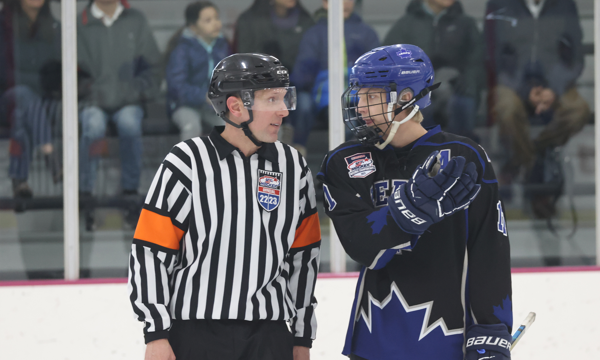Following the tragic death of the Hibbing, Minnesota native and Nottingham Panthers player Adam Johnson, hockey governing bodies, associations and leagues around the world have started taking hard looks at their equipment requirements and overall approaches around player safety.
In early November, USA Hockey announced that its Board of Directors unanimously voted to request that the USA Hockey Safety and Protective Equipment Committee begin the process of recommending potential rule changes regarding neck laceration protection. While any potential rule change proposals could be addressed as early as USA Hockey’s Winter Meeting in January 2024, some NHL, college and USHL players have already begun the practice of wearing protective neck and wrist protection on their own, while some local youth hockey districts have required them as well.
While it is very likely that more widespread policies on this issue will come to fruition, the decision to change the rule and to implement it quickly isn’t as simple as many might think.
Kevin Margarucci, USA Hockey’s manager of player safety, who has more than 25 years of experience as a certified athletic trainer and serves on the executive committee for the Hockey Equipment Certification Council, shared his thoughts on the issue with USA Hockey.
USA Hockey: Is there anything that can be done to prevent these kinds of tragic accidents from happening in the first place?
Margarucci: In general, protective equipment is one way; better on-ice awareness is another. But no one piece of equipment will provide zero risk of injury. These types of accidents are not common, but obviously tragic when they do occur.
USA Hockey: Currently, USA Hockey does not require players to wear neck laceration protectors. Do you see that policy changing?
Margarucci: The Board recently requested that the safety committee look at potential rule changes regarding neck laceration protectors. We don’t know yet what the scope of a rule change would look like. Any rule change proposal that may come out of our ongoing discussions could be addressed as early as our Winter Meetings in January. As an organization, we do recommend that all players wear a neck laceration protector that covers as much of the neck area as possible, in addition to cut-resistant socks, sleeves or undergarments.
USA Hockey: How easy or difficult would it be to implement such a rule? What needs to be considered?
Margarucci: Things to consider are who it impacts, what age levels, how it is enforced and when it goes into effect. One of the biggest questions now is about the current inventory of these products, which is very low. Also, there are different styles of neck laceration protectors, and not every style is right for every person. So, finding the right style and size, which covers as much of the neck as possible is important when selecting this piece of equipment. With the size of our membership and the demand for these items sure to grow if there was a rule change, as we aren’t the only organization having these conversations, that creates a supply issue. I know the equipment companies are trying to obtain materials to get on the market, and there are some back orders in place. So, these are the things being discussed.
USA Hockey: We’ve seen some professional players and college teams make the change to wearing neck protectors (though the NHL currently does not require them). Do you see this widespread change coming any time soon?
Margarucci: The discussions are definitely being had on a variety of different levels. How broad that change may be is yet to be known. Recent incidents have certainly heightened the attention to cut-resistant materials, but the full scope of where that leads remains to be seen.
USA Hockey: For parents out there who might not be sure how to react to this issue, what would you say to them about what it can/should mean for their own situation?
Margarucci: It is up to each individual family to determine whether their child should wear additional protective equipment. As an organization, our current recommendation is for players to wear a neck laceration protector that covers as much of the neck as possible, along with cut-resistant sleeves, socks, or undergarments.



